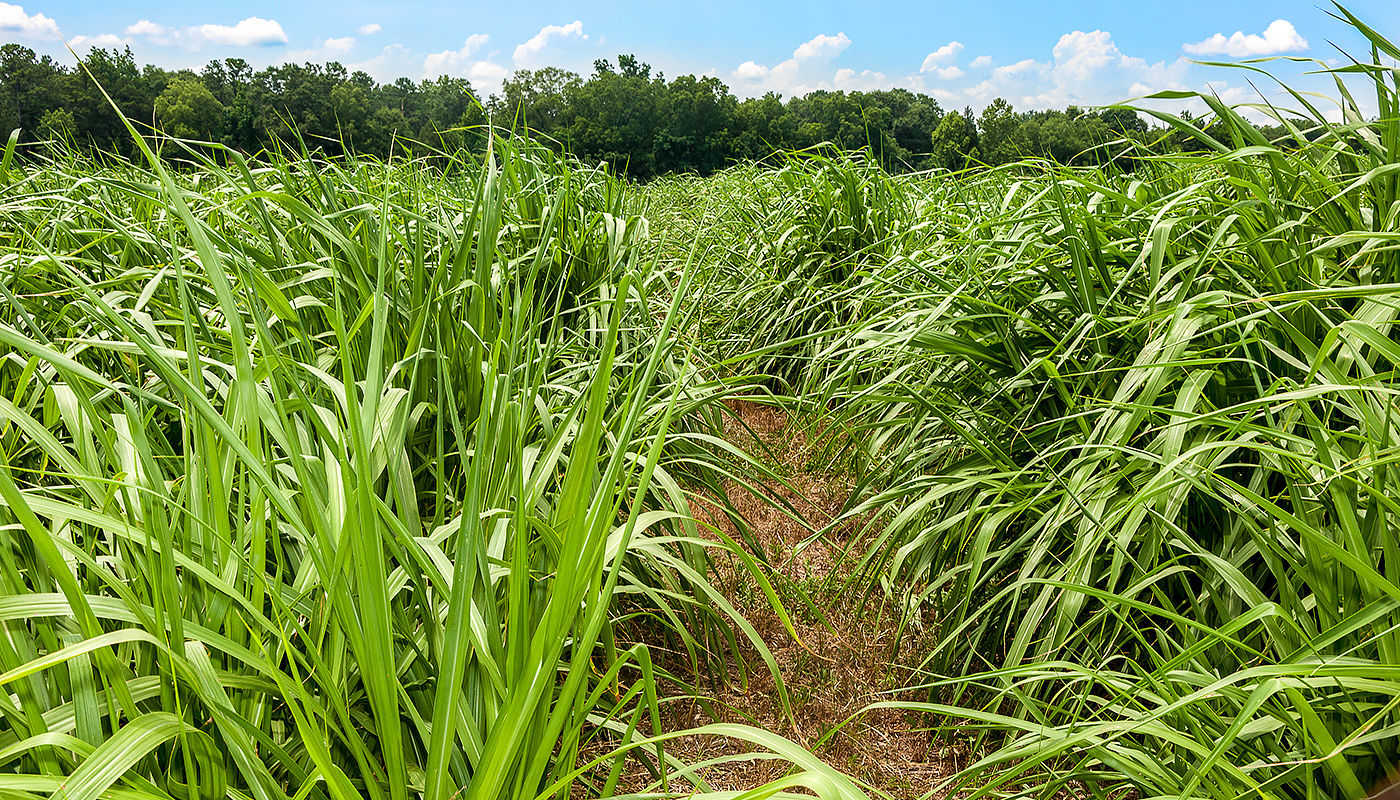Bioenergy and Climate Change

The potential of biomass for biofuel has been known for approximately 100 years, but availability of cheap and abundant fuel prevented its utilization. As the cost of fossil fuel has risen in recent years and reserves have been depleted, convincing evidence of damage to the environment has emerged and research focus has shifted to development of renewable and clean sources of energy. Overutilization of fertile farm land and food crops, like corn, for bioenergy may reduce farm income and pose a serious threat to sustainable agriculture. Bioenergy research is focused on sustainable alternatives to fossil fuels without infringing upon land and crops used for food production. By selecting biofuel crops with the ability to utilize marginal soils, these underutilized farm resources can be used to supplement farm income by supplying cellulosic biomass or stalk juice to biorefineries or by producing ethanol on farm.
Construction of a commercial biofuel plant is expensive and requires continuous operation throughout the year to obtain satisfactory return on investment. Long-term storage of bulky biomass feedstock is too expensive. Biofuel feedstock demand for a sustainable operation is substantial and can only be met by continuous supply of annual and perennial crops and high biomass trees.
Studies are being conducted at FVSU to address these issues using annual crops like sweet sorghum, forage sorghum and pearl millet, perennial crops like energycane, napiergrass, giant reed, and switchgrass, and woody biomass trees, like paulownia. Our research findings will establish the optimum level and mode of nitrogen input to maintain sustainable production of biofuel feedstocks from annual and perennial crops suitable for marginal soils of the southern Coastal Plain. The research will also provide guidance on suitable harvesting and handling modules for these crops.
Evaluating the physical, chemical and bulk characteristics of selected crops will help produce drop-in transportation biofuels and other co-products. Developing comprehensive life cycle assessment models to quantify the economic and environmental benefits of bioenergy crop production systems will help farmers' decision making in production of low-input biomass crops. Analysis of effects of genotype, environment, and nitrogen fertilization on grain quality traits and ethanol production and identifying QTLs for grain yield, proximate composition of grain, and ethanol yield will assist in the process of adopting crops like pearl millet for biofuel production.
Paulownia, a fast growing tree that can grow on flat or mountainous land and in various types of soils, can attain 2 meters in height and 4-5 cm diameter per year. Major limitations of solid biomass fuels such as wood are difficulty in handling and portability. To address these issues, research is carried out to convert solid biomass into liquid and gaseous fuels. Biological (fermentation) and/or chemical means (pyrolysis, gasification) can be used to produce fluid biomass fuels. Densification characteristics of bioenergy crops are also studied in order to produce highly durable pellets/briquettes. Research at FVSU will address the feasibility of developing paulownia as a dedicated lignocellulosic energy crop for producing biomass.